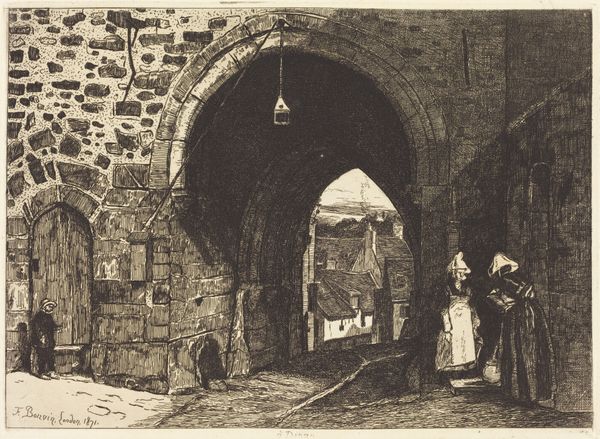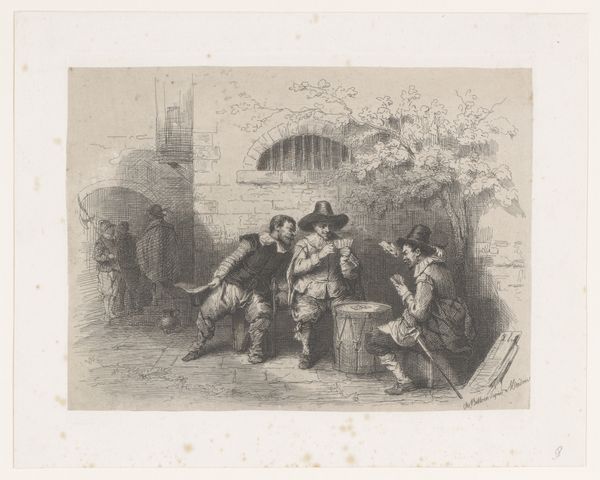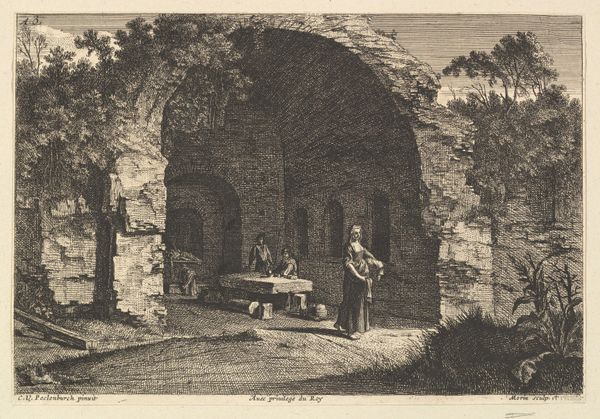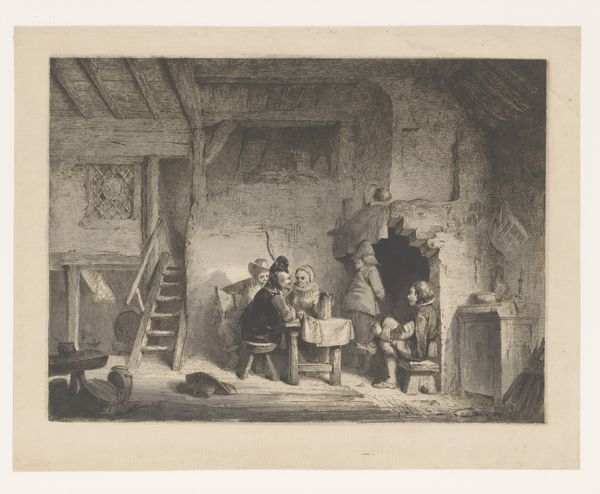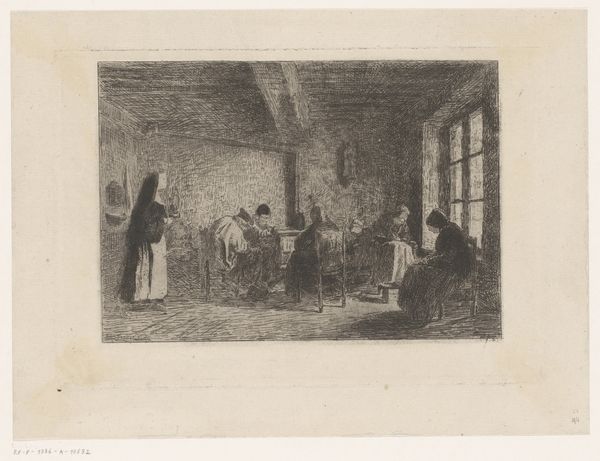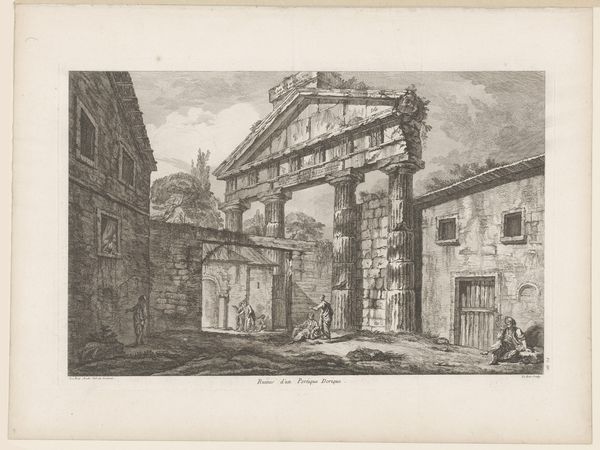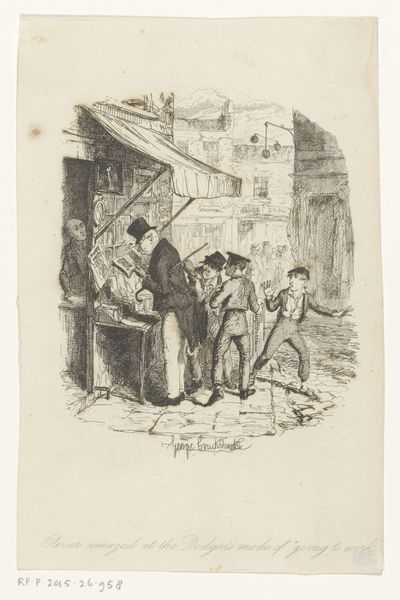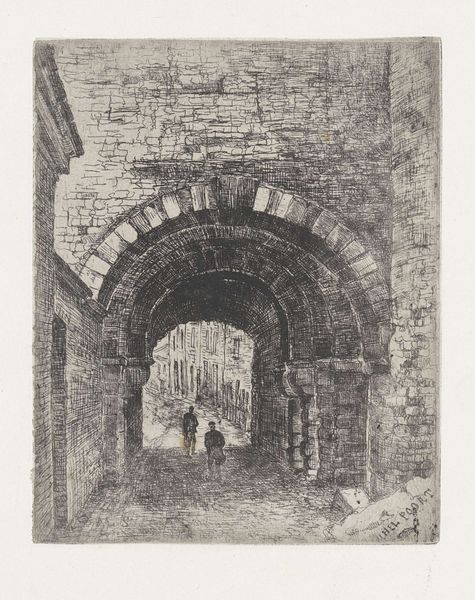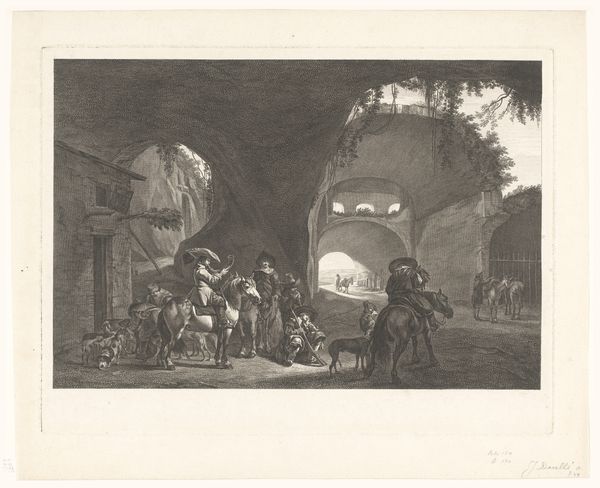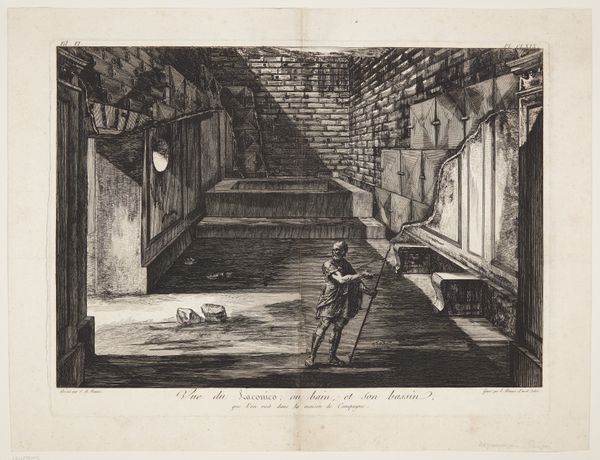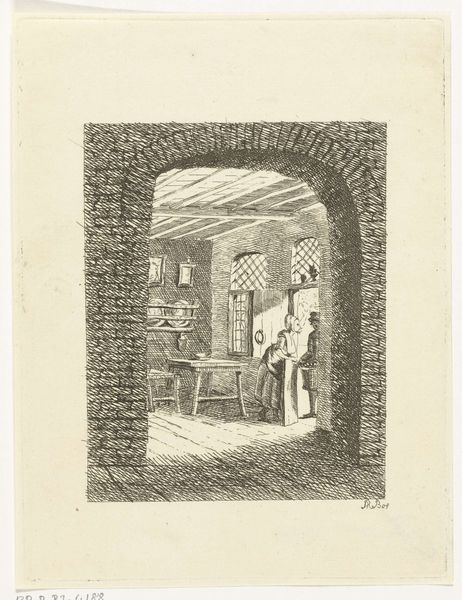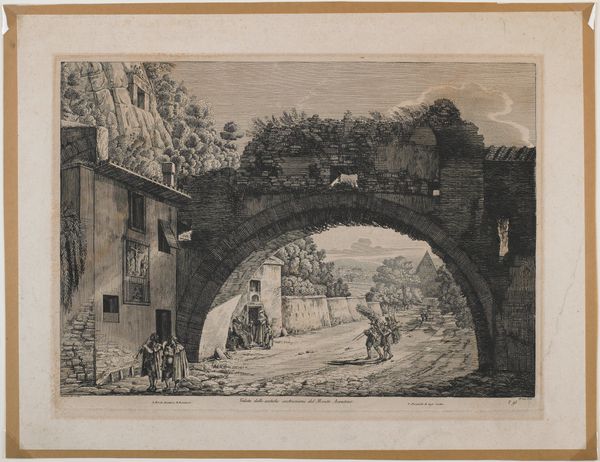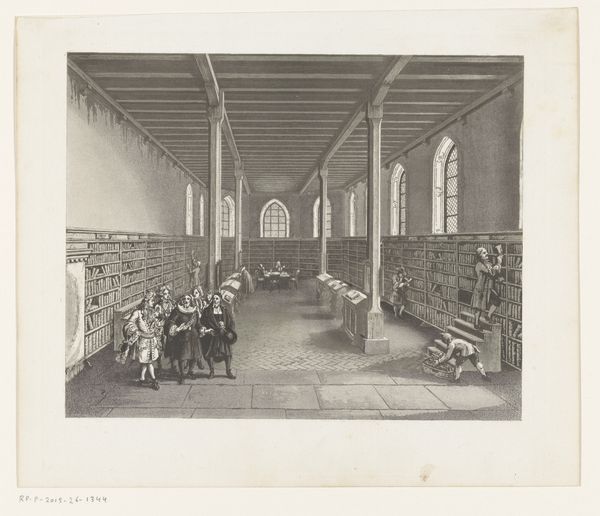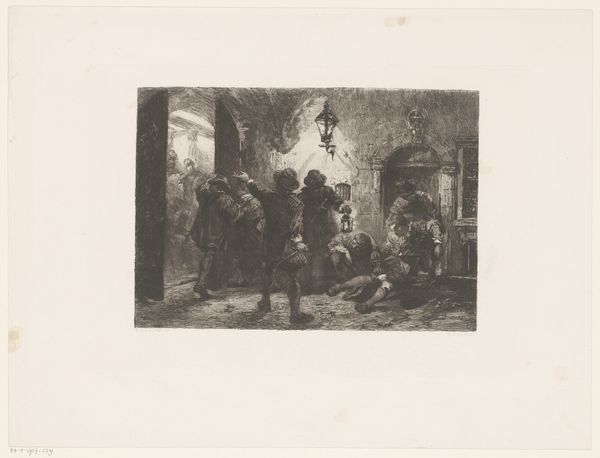
print, engraving
# print
#
landscape
#
19th century
#
genre-painting
#
engraving
Dimensions: height 234 mm, width 325 mm
Copyright: Rijks Museum: Open Domain
Curator: This is "Binnenplaats" a genre-painting from the period 1831 to 1897, created by Martinus Antonius Kuytenbrouwer, Jr. The Rijksmuseum holds it in their collection. As the labels describe, it is a print done using engraving techniques. Editor: Immediately, the scene's architectural enclosure evokes a sense of contained power, yet there's an everyday languor to the figures that's quietly compelling. It’s almost a theater stage, set back in time. Curator: I think that perception is especially potent given how Kuytenbrouwer composes with stark contrast. The foreground is shrouded in deep shadow. Emerging into sunlight in the distance, the suggestion is to advance from darkness toward enlightenment. Do you feel it embodies a moral quality? Editor: The image really poses questions about safety and governance within urban space, not necessarily morality. The figures carrying weaponry certainly introduce themes around security, power dynamics, and potential conflict. We’re positioned as outsiders, watching an inner world of some kind. I would love to learn about class tensions present in Amsterdam at that moment. Curator: I find it is how Kuytenbrouwer repeats the shape of the arch that holds my interest. It appears again as a city gate deep within the pictorial plane. These arched passageways appear again and again across cultures—doorways to understanding life’s journey—birth, death, and rebirth as initiatory passages. The arch has an age-old symbolic force. Editor: Those kinds of archways are deeply woven into European city design as much as into our cultural imagination. They’re framing structures that determine who belongs and who doesn’t. The composition focuses the eye precisely at the point of enclosure and exclusion. What strikes you about this interplay between private and public space? Curator: Ultimately, I feel that such contrasts prompt deep, almost unconscious associations with a sense of order and transition. The interplay between light and shadow is a symbolic vocabulary. The arch serves as more than architecture here, representing more timeless themes of human transformation. Editor: Yes, those transitions invite critical inquiry. Even from an early time in image creation, artists used printmaking techniques as means for mass distribution of their viewpoints and agendas to large audiences. The nuances invite a kind of probing speculation that helps the past reflect usefully on the present.
Comments
No comments
Be the first to comment and join the conversation on the ultimate creative platform.
